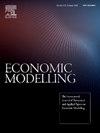Intensity of exploitation-exploration innovation strategies and credit ratings
IF 4.2
2区 经济学
Q1 ECONOMICS
引用次数: 0
Abstract
Our study explores how the intensity of corporate innovation strategies—exploration versus exploitation—affects firms’ credit ratings, an area largely unexplored. Explorative innovation emphasizes uncovering new knowledge, technologies, or markets, and is characterized by experimentation, risk-taking, and a high degree of uncertainty. On the other hand, exploitative innovation focuses on incremental improvements to existing products, processes, or capabilities, aiming to boost efficiency, reduce costs, and deliver short-term gains with lower risk. Analyzing 10,318 firm-year observations in the U.S. from 1985 to 2016, we find that firms adopting exploration (exploitation) intensive strategies tend to receive lower (better) credit ratings. These findings remain robust after addressing endogeneity and self-selection biases. Our results also hold when employing alternative measures of credit ratings and innovation intensity strategies. Our results suggest that the more disruptive exploration strategy results in lower credit rating while the incremental exploitative strategy improves credit ratings.
开发探索创新战略的强度与信用评级
我们的研究探讨了企业创新战略的强度——探索与利用——如何影响企业的信用评级,这是一个很大程度上未被探索的领域。探索性创新强调发现新的知识、技术或市场,其特点是实验、冒险和高度的不确定性。另一方面,利用性创新侧重于对现有产品、过程或能力的增量改进,旨在提高效率、降低成本,并以更低的风险交付短期收益。我们分析了1985年至2016年美国10318家公司的年度观察结果,发现采用勘探(开发)密集型战略的公司往往获得较低(更好)的信用评级。在解决了内生性和自我选择偏差后,这些发现仍然是强有力的。当采用信用评级和创新强度策略的替代措施时,我们的结果也成立。我们的研究结果表明,更具破坏性的勘探策略导致较低的信用评级,而增量开发策略提高了信用评级。
本文章由计算机程序翻译,如有差异,请以英文原文为准。
求助全文
约1分钟内获得全文
求助全文
来源期刊

Economic Modelling
ECONOMICS-
CiteScore
8.00
自引率
10.60%
发文量
295
期刊介绍:
Economic Modelling fills a major gap in the economics literature, providing a single source of both theoretical and applied papers on economic modelling. The journal prime objective is to provide an international review of the state-of-the-art in economic modelling. Economic Modelling publishes the complete versions of many large-scale models of industrially advanced economies which have been developed for policy analysis. Examples are the Bank of England Model and the US Federal Reserve Board Model which had hitherto been unpublished. As individual models are revised and updated, the journal publishes subsequent papers dealing with these revisions, so keeping its readers as up to date as possible.
 求助内容:
求助内容: 应助结果提醒方式:
应助结果提醒方式:


